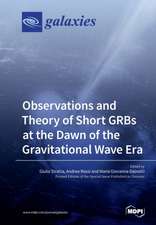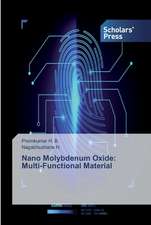The Cosmic Dust Connection: Nato Science Series C:, cartea 487
Editat de J. Mayo Greenbergen Limba Engleză Hardback – 31 dec 1996
| Toate formatele și edițiile | Preț | Express |
|---|---|---|
| Paperback (1) | 1828.29 lei 6-8 săpt. | |
| SPRINGER NETHERLANDS – 5 noi 2012 | 1828.29 lei 6-8 săpt. | |
| Hardback (1) | 1834.77 lei 6-8 săpt. | |
| SPRINGER NETHERLANDS – 31 dec 1996 | 1834.77 lei 6-8 săpt. |
Din seria Nato Science Series C:
- 24%
 Preț: 797.69 lei
Preț: 797.69 lei - 18%
 Preț: 957.62 lei
Preț: 957.62 lei - 18%
 Preț: 957.13 lei
Preț: 957.13 lei - 18%
 Preț: 1227.52 lei
Preț: 1227.52 lei -
 Preț: 396.40 lei
Preț: 396.40 lei -
 Preț: 403.75 lei
Preț: 403.75 lei - 18%
 Preț: 1239.37 lei
Preț: 1239.37 lei - 18%
 Preț: 1236.51 lei
Preț: 1236.51 lei - 18%
 Preț: 1231.78 lei
Preț: 1231.78 lei - 18%
 Preț: 1229.10 lei
Preț: 1229.10 lei - 18%
 Preț: 1835.21 lei
Preț: 1835.21 lei - 24%
 Preț: 1076.39 lei
Preț: 1076.39 lei -
 Preț: 390.46 lei
Preț: 390.46 lei -
 Preț: 369.63 lei
Preț: 369.63 lei - 18%
 Preț: 1232.41 lei
Preț: 1232.41 lei -
 Preț: 394.51 lei
Preț: 394.51 lei - 18%
 Preț: 1226.24 lei
Preț: 1226.24 lei - 18%
 Preț: 1845.80 lei
Preț: 1845.80 lei -
 Preț: 399.88 lei
Preț: 399.88 lei -
 Preț: 384.28 lei
Preț: 384.28 lei -
 Preț: 390.88 lei
Preț: 390.88 lei -
 Preț: 381.19 lei
Preț: 381.19 lei - 18%
 Preț: 1848.64 lei
Preț: 1848.64 lei - 18%
 Preț: 951.14 lei
Preț: 951.14 lei - 18%
 Preț: 1230.35 lei
Preț: 1230.35 lei - 18%
 Preț: 1236.51 lei
Preț: 1236.51 lei -
 Preț: 401.03 lei
Preț: 401.03 lei -
 Preț: 406.25 lei
Preț: 406.25 lei - 18%
 Preț: 1230.84 lei
Preț: 1230.84 lei -
 Preț: 418.34 lei
Preț: 418.34 lei - 18%
 Preț: 1223.74 lei
Preț: 1223.74 lei
Preț: 1834.77 lei
Preț vechi: 2237.52 lei
-18% Nou
Puncte Express: 2752
Preț estimativ în valută:
351.07€ • 366.58$ • 289.91£
351.07€ • 366.58$ • 289.91£
Carte tipărită la comandă
Livrare economică 16-30 aprilie
Preluare comenzi: 021 569.72.76
Specificații
ISBN-13: 9780792343653
ISBN-10: 0792343654
Pagini: 545
Ilustrații: X, 545 p.
Dimensiuni: 155 x 235 x 32 mm
Greutate: 0.96 kg
Ediția:1996
Editura: SPRINGER NETHERLANDS
Colecția Springer
Seria Nato Science Series C:
Locul publicării:Dordrecht, Netherlands
ISBN-10: 0792343654
Pagini: 545
Ilustrații: X, 545 p.
Dimensiuni: 155 x 235 x 32 mm
Greutate: 0.96 kg
Ediția:1996
Editura: SPRINGER NETHERLANDS
Colecția Springer
Seria Nato Science Series C:
Locul publicării:Dordrecht, Netherlands
Public țintă
ResearchCuprins
Formation and evolution of interstellar icy grain mantles.- The core-mantle interstellar dust model.- Organic material in the interstellar medium.- PAHS, they’re everywhere!.- Neutral and ionized PAH spectral properties. Implications for the ultraviolet-visible interstellar extinction.- Absorption spectra of HI clouds.- Infrared spectroscopy of interstellar ices.- Polarization of starlight by interstellar dust.- Observations of CO ices in molecular clouds.- Determination of the optical constants of ices in the mid infrared.- Some astrophysical applications of ion irradiation experiments.- Grain formation and metamorphism.- Optical data of glassy pyroxenes and olivines.- Dust in Herbig Ae/Be stars and the cosmic dust connection.- Statistical properties of the interstellar dust in faint early-type galaxies.- The Tauvex UV imager and its contribution to the study of dust.- Dust properties and distribution in the UV.- Extinction and infrared emission from fractal dust grains.- Modeling astrophysical phenomena involving dust.- Properties of interstellar grains derived from X-ray halos.- Light extinction by layered grains.- Improvement of the discrete dipole approximation for the scattering calculations of clusters: the ?1-term method.- Pulse-heating of fragments from Orgueil (CI): simulation of atmospheric entry heating of micrometeorites.- Post flight analyses of impact sites on Eureca spacecraft and solar cell arrays.- Laboratory investigations of hydrogen recombination reactions on interstellar dust grain analogues.- On the origin of complex interstellar molecules.- A circumsolar dust ring near the earth.- Area to mass ratio and packing factor from meteor data.- Cometary dust loss: meteoroid streams and the inner solar system dust cloud.- Dust around young stellarobjects.- Origin and evolution of cometary ice.- Comets as samplers of interstellar dust.- The link between cometary and interstellar dust.- Organic solids in the outer solar system: Kuiper belt planetesimals.- 3-D modelling of the surface activity of a comet nucleus.- Two approaches to discuss on the unexpected activity of comets at large heliocentric distances.- Numerical modelling of gas production curves of a dust covered comet nucleus.- Physical processes on grains important for the chemical evolution of interstellar clouds.- List of Contributors.- List of Participants.- Index of Chemical Species.


















